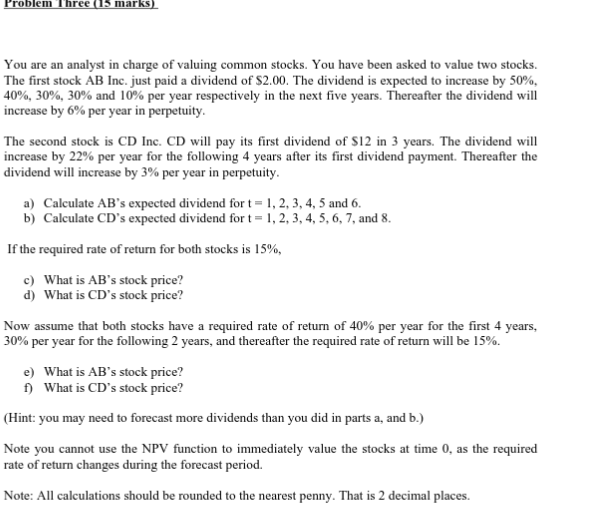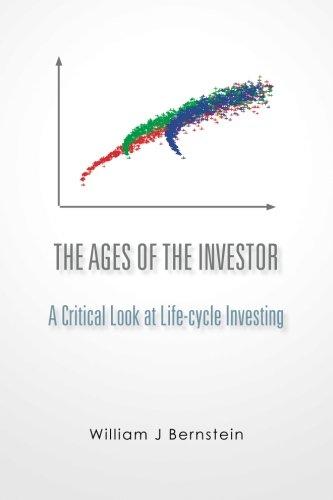
Problem Three (15 marks) You are an analyst in charge of valuing common stocks. You have been asked to value two stocks. The first stock AB Inc. just paid a dividend of $2.00. The dividend is expected to increase by 50%, 40%, 30%, 30% and 10% per year respectively in the next five years. Thereafter the dividend will increase by 6% per year in perpetuity. The second stock is CD Inc. CD will pay its first dividend of $12 in 3 years. The dividend will increase by 22% per year for the following 4 years after its first dividend payment. Thereafter the dividend will increase by 3% per year in perpetuity. a) Calculate AB's expected dividend for t= 1, 2, 3, 4, 5 and 6. b) Calculate CD's expected dividend for t = 1, 2, 3, 4, 5, 6, 7, and 8. If the required rate of return for both stocks is 15%, c) What is AB's stock price? d) What is CD's stock price? Now assume that both stocks have a required rate of return of 40% per year for the first 4 years, 30% per year for the following 2 years, and thereafter the required rate of return will be 15%. e) What is AB's stock price? f) What is CD's stock price? (Hint: you may need to forecast more dividends than you did in parts a, and b.) Note you cannot use the NPV function to immediately value the stocks at time 0, as the required rate of return changes during the forecast period. Note: All calculations should be rounded to the nearest penny. That is 2 decimal places. Problem Three (15 marks) You are an analyst in charge of valuing common stocks. You have been asked to value two stocks. The first stock AB Inc. just paid a dividend of $2.00. The dividend is expected to increase by 50%, 40%, 30%, 30% and 10% per year respectively in the next five years. Thereafter the dividend will increase by 6% per year in perpetuity. The second stock is CD Inc. CD will pay its first dividend of $12 in 3 years. The dividend will increase by 22% per year for the following 4 years after its first dividend payment. Thereafter the dividend will increase by 3% per year in perpetuity. a) Calculate AB's expected dividend for t= 1, 2, 3, 4, 5 and 6. b) Calculate CD's expected dividend for t = 1, 2, 3, 4, 5, 6, 7, and 8. If the required rate of return for both stocks is 15%, c) What is AB's stock price? d) What is CD's stock price? Now assume that both stocks have a required rate of return of 40% per year for the first 4 years, 30% per year for the following 2 years, and thereafter the required rate of return will be 15%. e) What is AB's stock price? f) What is CD's stock price? (Hint: you may need to forecast more dividends than you did in parts a, and b.) Note you cannot use the NPV function to immediately value the stocks at time 0, as the required rate of return changes during the forecast period. Note: All calculations should be rounded to the nearest penny. That is 2 decimal places







